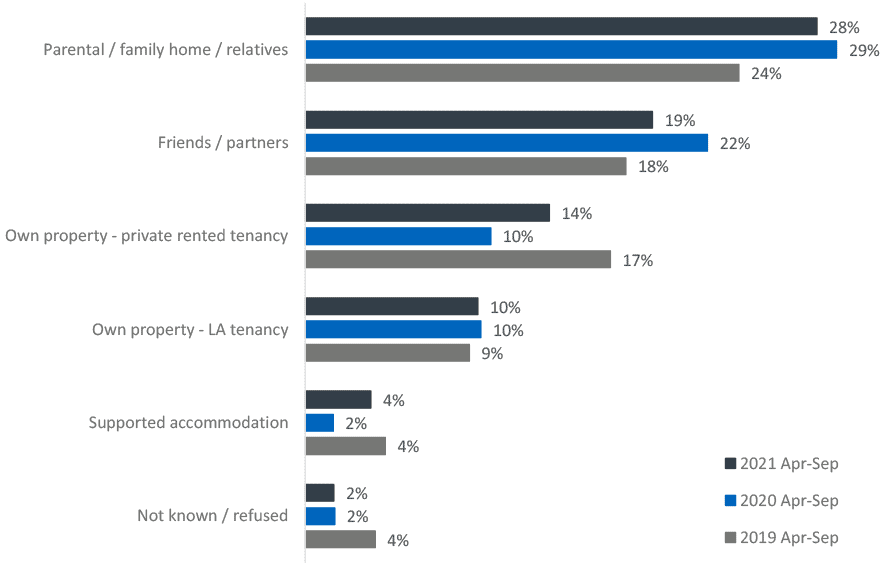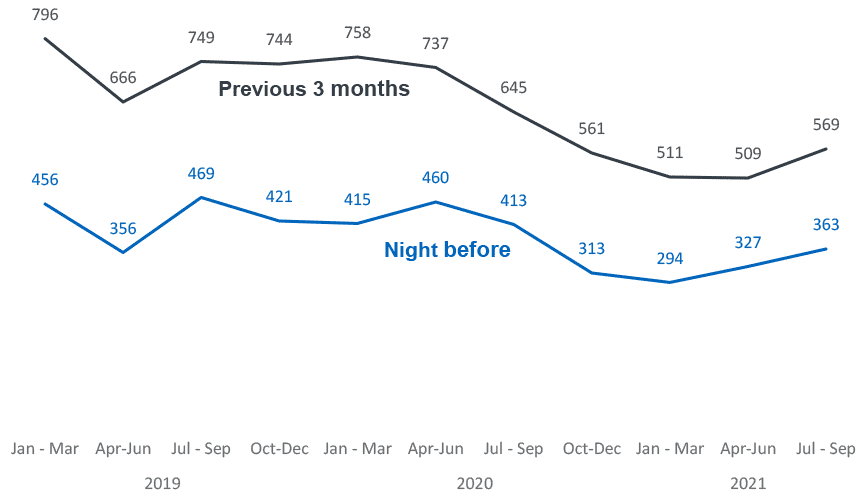Homelessness in Scotland: update to 30 September 2021
This statistics bulletin provides information on homelessness in Scotland in the 6 month period from 1 April 2021 to 30 September 2021, alongside historical data.
Reasons for Homelessness and Prior Circumstances
Key Points
- Indications of a return to pre-pandemic proportions in reasons for homelessness and from where households become homeless.
- Rough sleeping numbers remain lower compared to pre-pandemic, although there have been signs of more recent increases.
Reasons
‘Asked to leave’ and ‘household disputes’ remain the most common reasons given for making a homelessness application. The proportion stating ‘asked to leave’ increased following COVID-19 and remains higher than pre-pandemic proportions. Although ‘household disputes’ decreased compared to 2020, this remains higher than pre-pandemic proportions. ‘Fleeing domestic violence’ and ‘harassment’ have both seen an increase from 2019 and 2020. ‘Termination of tenancy / mortgage due to rent arrears / default on payments’ remains lower than pre-pandemic proportions.

Some applicants (75%) also provided additional reasons for homelessness. Of these, the biggest change in percentage share was for ‘not to do with the applicant household’ - from 44% to 48% - with ‘lack of support from family/friends’ experiencing the greatest decrease from 25% to 21%.
Previous property
Similarly, there appears to be a bit of return to pre-pandemic proportions from where people are becoming homeless. This is particularly the case for those becoming homeless from friends/partners. There has been less of a decrease in those from parental/family home compared to 2020. Those becoming homeless from a private rented tenancy have increased from last year, although this remains still quite a bit lower compared to pre-pandemic proportions.

The decline in proportions becoming homeless from friends and partners mirrors the decreases in those becoming homeless following a household dispute. The increase in those becoming homeless from a private rented tenancy may be due to the ceasing of the ban on evictions which were lifted from 17th May 2021, in line with the easing of COVID-19 restrictions.
Rough sleeping
Between April and September 2021, 690 (4% of all applications) households reported rough sleeping the night before and 1,078 (6% of all applications) in the previous 3 months. Numbers reporting rough sleepers remain smaller than those pre-pandemic, although there have been some recent increases as demonstrated in Chart 5.

Contact
There is a problem
Thanks for your feedback